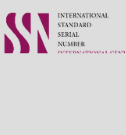3065-923X
Submissions
Submission Preparation Checklist
All submissions must meet the following requirements.
- This submission meets the requirements outlined in the Author Guidelines.
- This submission has not been previously published, nor is it before another journal for consideration.
- All references have been checked for accuracy and completeness.
- All tables and figures have been numbered and labeled.
- Permission has been obtained to publish all photos, datasets and other material provided with this submission.
Chronicles of Biomedical Sciences
Submission Guidelines
Manuscripts should be prepared in accordance with the Chronicles of Biomedical Sciences format. Use clear and concise language, ensuring proper grammar and spelling. we strongly recommend that you write concisely and stick to the following guidelines:
Title Page: Include a title page with the title, list of authors, affiliations, and corresponding author's contact information.
Author contributions: You must supply an Author Contribution Statement. The author name you give as the corresponding author will be the main contact during the review process and should not change. The information you provide in the submission system will be used as the source of truth when your paper is published.
Title: Limited to 15 words.
Abstract: Limited to 250 words, summarizing the study's objectives, methods, results, and conclusions. Please do not include any references in your abstract and abstract should not contain sections or subheadings.
Keywords: Provide 4-6 relevant keywords.
Introduction: Limited to 500 words, clearly stating the research question, hypothesis, or objectives. No subheading.
Materials and Methods: Detailed, but concise, including statistical methods. Limited to 800 words. With subheadings.
Results: Present findings clearly, using tables and figures as needed. Limited to 700 words. With subheadings
Discussion: Interpret results, discuss implications, and relate findings to existing literature. Limited to 800-1000 words. Without subheadings.
Conclusion: Summarize key findings and suggest future research directions. Limited to 200 words.
Acknowledgments: Kindly limit acknowledgments to a concise form, avoiding expressions of gratitude to anonymous referees and editors or overly effusive comments. It is appropriate to acknowledge grant or contribution numbers, as well as recognize the support received from medical writers, proofreaders, and editors. Acknowledge funding sources, collaborators, or institutions that supported the research. Limited to 150 words.
References: Follow the Journal's citation style. Limited to 60 references. We don’t copy edit your references. Therefore, it is essential you format them correctly. At CBS, we use the standard Vancouver referencing style. So, when formatting your references, make sure they:
- Run sequentially (and are always numerical).
- Only have one publication linked to each number.
- Only include papers or datasets that have been published or accepted by a named publication, recognised preprint server or data repository (if you include any preprints of accepted papers in your reference list, make sure you submit them with the manuscript).
- Include published conference abstracts and numbered patents, if you wish.
- Don’t include grant details and acknowledgements.
- References should be present conclusion of the manuscript.
In your reference list, you should:
- Include all authors unless more then three, in which case three authors will be followed by 'et al.'.
Examples
Published papers:
Ashraf S, Park HK, Park H, et al. Snapshot of phase transition in thermoresponsive hydrogel PNIPAM: Role in drug delivery and tissue engineering. Macromol Res. 2016;24:297-304. doi:10.1007/s13233-016-4052-2.
Books:
Munir S, Rehman K, Ashraf S, Akbar R, Shahid A, Nisar MA, Khurshid M. Polymorphisms in drug-metabolizing enzymes: Challenges and strategies. In: Editors(s) of the book. Biochemistry of Drug Metabolizing Enzymes: Trends and Challenges. 2022;347-374.
Figures and Tables:
Figures: Submit main findings as high-resolution (600 dpi) TIFF or Jpg files. Limit main figures to 6.
Tables: Limit to essential data; use concise headings.
Figure Captions: Include detailed captions for each figure. Must mention significance values, scare bar and number of experiment repeats according to the data. Number figures and tables consecutively and mention in the manuscript. Write down figures legends after the references.
Ethical Considerations:
Clearly state any ethical considerations, approvals, or informed consent obtained. Follow ethical guidelines for experiments involving humans or animals.
Manuscript Submission:
Submit manuscripts through the online submission system.
Include a cover letter briefly introducing the study and confirming adherence to ethical guidelines.
Peer Review Process: All submitted manuscripts will undergo rigorous double-blind peer review. Authors will receive feedback and be given an opportunity to address reviewers' comments.
Competing interests: A competing interests statement is required. If there is no conflict of interest, please provide a clear and unequivocal statement to that effect. Each contributing author must explicitly and unambiguously describe any potential competing interest or affirm the absence of such conflicts.
Chronicles of Biomedical Sciences: Guidelines for Review Papers
- Manuscript Preparation:
Manuscripts should follow the Chronicles of Biomedical Sciences format.
Include a title page with the title, list of authors, affiliations, and corresponding author's contact information.
The total word count for a review paper typically ranges from 5,000 to 8,000 words, excluding abstract, references, and supplementary material.
- Manuscript Structure:
Title: Limited to 15 words.
Abstract: Limited to 300 words, summarizing the scope, objectives, and key findings of the review.
Keywords: Provide 4-6 relevant keywords.
Introduction:
Provide context for the review topic.
Clearly outline the objectives and scope of the review.
- Review Body:
Section Organization:
Divide the review into logical sections (e.g., historical context, current state, emerging trends).
Clearly label each section with headings.
Comprehensive Analysis:
Provide a thorough analysis of the existing literature.
Discuss key theories, methodologies, and findings.
Highlight gaps or controversies in the literature.
- Conclusion:
Summarize key insights from the literature.
Identify areas for future research or potential advancements.
Conclude with the overall significance of the reviewed literature.
- References:
Include a comprehensive list of references.
Follow the Journal's citation style.
- Ethical Considerations:
Clearly state any ethical considerations related to the review process.
- Manuscript Submission:
Submit manuscripts through the online submission system.
Include a cover letter outlining the importance and relevance of the review topic.
- Peer Review Process:
All submitted review papers will undergo thorough peer review.
Authors will receive feedback and be given an opportunity to address reviewers' comments.
Chronicles of Biomedical Sciences: Guidelines for Editorials
- Authorship:
Editorial contributions are typically written by the journal's editors or invited experts.
Co-authored editorials may be considered if multiple experts contribute.
- Manuscript Structure:
The total word count for an editorial is generally shorter, ranging from 1,000 to 3,000 words.
Title: Limited to 15 words.
Abstract: Not required for editorials.
Keywords: Provide 3-5 relevant keywords.
Introduction:
Briefly introduce the editorial's topic or theme.
Clearly state the purpose and perspective.
- Editorial Content:
Opinion and Perspective:
Express opinions or perspectives on current issues or developments in the field.
Support arguments with references to relevant literature.
Clarity and Conciseness:
Keep the editorial concise and focused.
Avoid excessive technical jargon; make it accessible to a broad audience.
- Conclusion:
Summarize key points and emphasize the significance of the discussed topic.
Conclude with insights or recommendations.
- References:
Include references to support key points.
Follow the Journal's citation style.
- Ethical Considerations:
Adhere to ethical standards in presenting information and expressing opinions.
- Editorial Submission:
Submit editorials through the designated submission system.
Include a brief cover letter outlining the editorial's focus and significance.
- Peer Review Process:
Editorials may undergo editorial review for clarity and alignment with the journal's scope.
Editorial Policies
- Open Access:
Our journal follows a Gold Open Access model.
- Publication Frequency:
The journal is published quarterly.
- Copyright and Licensing:
Authors retain copyright, and manuscripts are published under a Creative Commons Attribution License (CC BY NC 4.0).
- Manuscript Handling Fees:
A processing fee of $XXX applies upon manuscript acceptance.
- Editorial Decision:
The editorial decision will be communicated within 4-6 weeks after the completion of peer review.
- Appeals:
Authors may appeal editorial decisions within 14 days of notification.
- Contact Information:
For inquiries and support, contact the editorial office at [email protected]
.
Privacy Statement
The names and email addresses entered in this journal site will be used exclusively for the stated purposes of this journal and will not be made available for any other purpose or to any other party.



